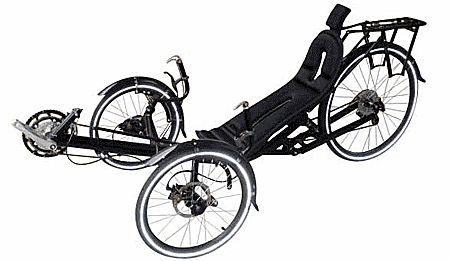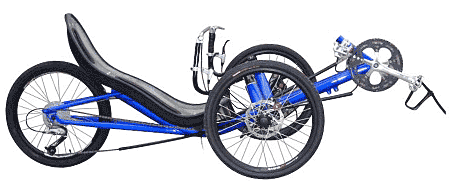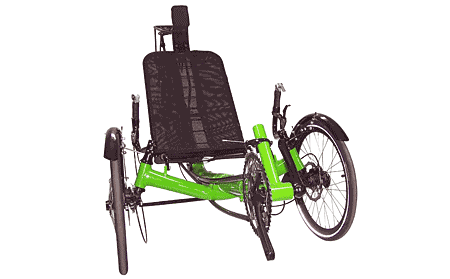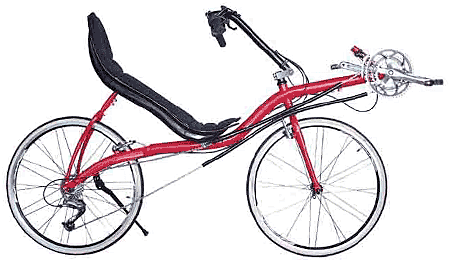















What Recumbent Bike is for me?
There are many different types of recumbent bikes (2 wheelers) and trikes (3 wheelers) available. Bikes come in a huge variety of styles, weights, comfort levels and prices. There will be several different types of recumbent bikes in your selection when you evaluate which one is for you. The question is, which one is right for you? With recumbent bikes or any type of bikes for that matter, there are compromises when evaluating one type against another. It is hope that this information will help you decide which compromises are best for you. In choosing a recumbent bike, there are several things you need to consider:
Your price range, Your height/weight, Your riding style, Your level of fitness.
Price
The first thing you are likely to consider is the price. Recumbent bikes normally start out at a higher cost than upright bikes because they are not yet mass produced at the level of those sold at Big W or normal bike outlets. Also they have the equivalent of a high end office chair grafted onto the top of them, which adds to the price. The lowest priced ones are normally around the $1,000 to $1,500. The bikes you find in this price range are quite serviceable and easy to ride and suit you’re requirements. You can get a great recumbent for around $1,500/$2,500, and this is the price range you should be looking in if you will be riding once a week or more. If you are a casual rider, or on a limited budget, you will want to start out with one of the lower priced recumbents. High end recumbent bikes and trikes can be as highly priced as $8,000 although this will not necessary provide you with a bike that will be any better than one that costs half that amount. Paying higher prices for a recumbent will buy you things like light weight, space age components, exotic materials, suspension, and more speed although speed is more likely up to your fitness level. There is no need to spend that kind of money to purchase a good reliable recumbent as most are very well made for under $5,000.
Rider Height and Weight
Most recumbent bikes are still designed and constructed for individuals. There are a number of recumbent bikes on the market that are designed to fit the average size and weight rider. Some types of recumbents are easier to ride than others. If you are shorter you will find that due to the lower seat height, the bikes with a smaller front wheel will be easier to ride. If you are taller you can ride most any style of recumbent. If you are a weight challenged person or have circulatory issues especially in your legs, you will probably want a long wheelbase (LWB) recumbent with a lower bottom bracket. If you don't have these issues, or want a sportier feeling bike, you may want a short wheelbase (SWB) recumbent. People with circulatory issues in their arms will find under seat steering (USS) more to their liking. I recommend above seat steering (ASS or OSS) for those who don't have those issues, as it is more aerodynamic.
Fitness
Your fitness level is a major consideration. If you are a
casual rider, and are just into riding once in a while, I'd suggest a bike
around the $1000. Most of the bikes around the $1,500 plus mark are designed for
comfort, and as such, your will be trading off potential speed. If you ride once
a week or more, or want a higher performance bike, I'd suggest a bike around the
$2,500 plus mark. If you are a casual rider and buy an expensive bike expecting
it to make you go fast, you may be comfortable, but disappointed in your speed.
If you currently ride a road bike, and purchase a performance oriented
recumbent, you should eventually be as fast or faster than on your road bike.
Note that it will take a few months to develop your "'bent muscles".
Trikes
If you don't want to deal with that balancing thing or have
to un-clip your shoes from the pedals when coming to a stop, or just think
trikes are cool, there are recumbent trikes available for every task. Generally
the tadpole trikes (two wheels in front) are better at cornering, while the
delta trikes (two in back) are more stable at high speeds. Trikes come in a huge
range of weights and prices. Recumbent trikes are generally slower than
recumbent bikes. Again it comes down to compromise although trikes are
allot of fun and are very good for touring. If you want to push the
boundaries a trike tends to be more forgiving and stable.
What Recumbent Bike is for me?